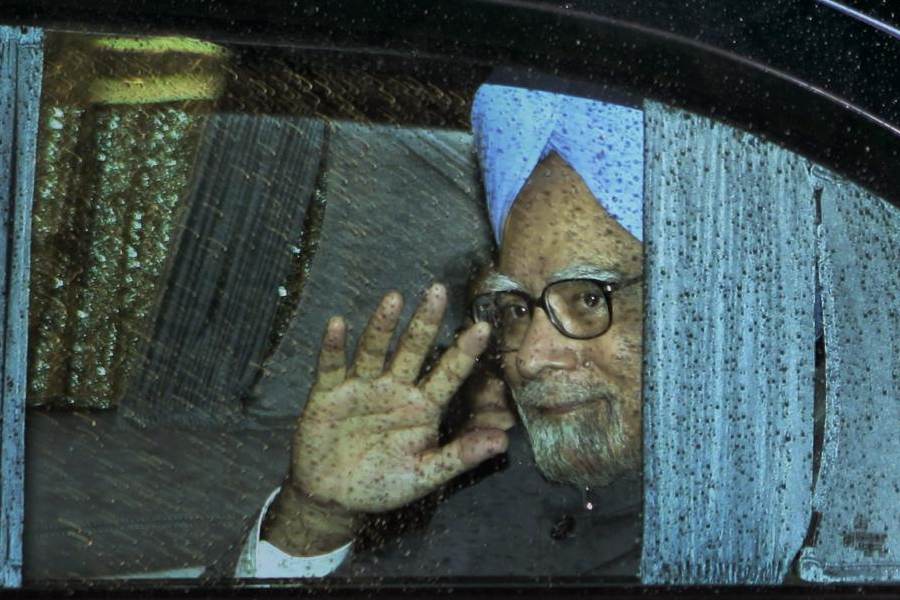 Friday, 27 December 2024
Friday, 27 December 2024
 Friday, 27 December 2024
Friday, 27 December 2024
As the teams walked into the M. Chinnaswamy Stadium on the morning of the fourth day of the Test on Saturday, the air was thick with a mixture of despair and faint hope.
The previous day's play had ended with India reeling at 12 for no loss in their second innings, still trailing New Zealand by a mammoth 246 runs. The ghost of that disastrous first innings — 46 all out — seemed to linger over the ground like stubborn morning mist.
But cricket, like life, has a way of surprising us just when we think we've seen it all.
By the time stumps were drawn on Day 4, two young men had not only rescued India from the brink of an embarrassing defeat but also rekindled memories of past glories and ignited dreams of an improbable victory.
Rishabh Pant’s belligerent 99 and Sarfaraz Khan’s resolute 150 had turned the match on its head, leaving India at 438 for 6, a lead of 82 runs.
The match had seemed all but lost for India after their first-innings collapse, their lowest Test score since the infamous 42 at Lord's in 1974. New Zealand, riding on a commanding first-innings lead of 258, appeared set for an easy win.
But cricket, as the cliche goes, is a game of glorious uncertainties.
Pant's phoenix act: Rising from the ashes
It was barely eight months ago that fans saw images of a battered and bruised Rishabh Pant in a hospital bed. The car accident that nearly claimed his life had left him with multiple injuries and an uncertain future. The cricketing world held its collective breath, wondering if this prodigious talent would ever return.
The dynamic wicketkeeper-batsman walked onto the Chinnaswamy pitch on Saturday with India still trailing by 212 runs. But those who know Pant were not surprised by his comeback.
This is a man who hit a six off the second ball he faced in Test cricket. A man who dared to reverse-sweep James Anderson for six. A man who, in the words of his childhood coach Tarak Sinha, "plays cricket like he's in a video game”.
As Pant unleashed a barrage of boundaries against the Kiwi bowlers, it was a treat for the fans. Just a run short of another memorable century, his 99 — scored at a strike rate of 80.49 — was vintage Pant: fearless, audacious, and utterly compelling.
His knock, studded with 12 fours and four sixes, was more than just runs on the board. It was a statement — a reaffirmation of his place in the pantheon of Indian cricket’s match-winners.
Pant, known for his aggressive style, once famously said, “I don’t think about personal milestones. I play for the team, for the situation.”
His innings embodied that philosophy.
Sarfaraz Khan: Domestic circuit sensation to India’s Test batting pillar
If Pant's innings was a whirlwind, Sarfaraz Khan's 150 was the eye of the storm — calm, composed, and destructive in its own way.
Sarfaraz’s journey to this moment has been anything but smooth. A 12-year-old boy who arrived at Mumbai’s maidans with his father has now left an indelible mark on the domestic circuit. He has been hailed as the next big thing in Mumbai cricket, but the road from prodigy to performer is paved with challenges.
Weight issues, a controversial switch to Uttar Pradesh, and questions about his temperament nearly derailed his career. But like the city he represents, Sarfaraz refused to stay down.
His recent First-Class performances have been nothing short of Bradmanesque. An average of 80.47 — second only to the Don himself — made his Test selection inevitable. Yet, there were doubts: could he replicate his form at the highest level?
On Saturday, Sarfaraz silenced his critics. His 150, spread over 291 deliveries, was a masterclass in Test match batting. It was an innings that would have made Vijay Merchant proud — patient when needed, punishing when possible.
Pant and Sarfaraz’s partnership: A reunion of U-19 comrades in arms
Pant and Sarfaraz, teammates from the 2016 U-19 World Cup squad, added 177 runs for the fourth wicket — a partnership that will be remembered long after this Test ends. Their contrasting styles — Pant's flamboyance and Sarfaraz’s grit — reflected India's cricketing philosophy: respect for tradition, but never bound by it.
Beyond the runs and records, it was their fight that stood out. These two young men, carrying the hopes of a billion people, refused to buckle under pressure. They weren't just playing cricket; they were making a statement about resilience.
New Zealand in control: India’s fightback may not be enough
Despite the heroics of Pant and Sarfaraz, the match situation favours New Zealand. A target of 107, while not insignificant in the fourth innings of a Test match, is well within reach for a team of New Zealand's calibre.
The pitch, while showing signs of wear, hasn't deteriorated to the extent that India would have hoped for. The New Zealand batsmen, led by the experienced Kane Williamson, will be confident of chasing down this total.
India's bowlers face an uphill task. They will need to channel the spirit shown by Pant and Sarfaraz and produce something extraordinary to defend this modest total. Every run will be crucial, and the first hour of play on the final day could well determine the outcome of the match.
Cricket and the fight within: How Pant and Sarfaraz inspired a nation
As the final day approaches, the match remains delicately poised. The outcome may still favour New Zealand, but regardless of the result, the innings of Pant and Sarfaraz will resonate in the annals of Indian cricket.
Their performances remind us that cricket, like life, is not just about success or failure but about the spirit to fight back.
As Vijay Merchant once said, “Cricket is a game played between the ears.” Pant and Sarfaraz have shown us that it is also played with heart.
A shot at history
From the nadir of 46 all out in the first innings to posting a challenging target of 107, India's resurgence has been nothing short of remarkable. The magnitude of this potential comeback becomes clear when we consider some of the greatest revivals in Test history.
In 2001, India famously followed on against Australia at Eden Gardens, only to win the match thanks to VVS Laxman's 281 and Rahul Dravid's 180. In 1981, England, following on and at 135 for 7 in their second innings, staged an incredible comeback against Australia at Headingley, powered by Ian Botham's 149 not out and Bob Willis' 8 for 43.
However, what sets this Chinnaswamy Test apart is the sheer depth of the hole India found themselves in after the first innings.
Never in the history of Test cricket has a team been bowled out for less than 50 in their first innings and gone on to win the match.
If India manage to defend 107 and secure victory, it would undoubtedly rank as the greatest comeback in the 146-year history of Test cricket.
Even if New Zealand manage to chase down the target, India's fightback will be remembered as one of the most spirited in recent memory. To go from 46 all out to setting a target of 107 is a testament to the team's resilience and mental fortitude.
Sunil Gavaskar, who was part of many famous Indian comebacks, once said, "It's not over until it's over in Test cricket." These words ring particularly true as we head into what promises to be a thrilling final day at Chinnaswamy.







